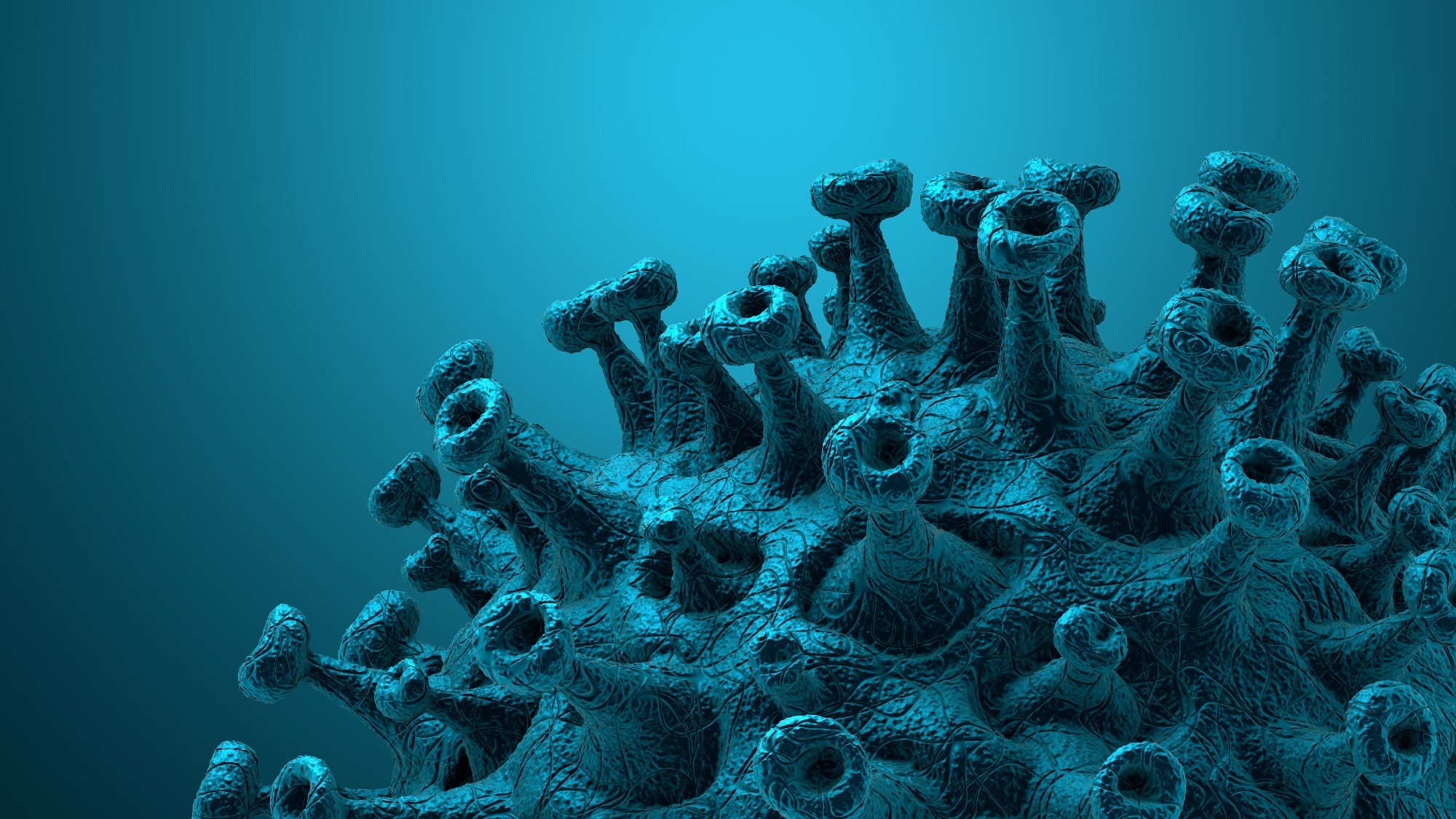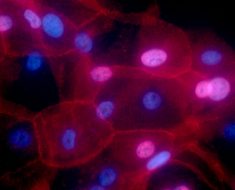In a recent study posted to the Research Square* preprint server, researchers identified host antiviral factors and pathways regulating severe acute respiratory syndrome coronavirus 2 (SARS-CoV-2) infection.

Like other coronaviruses (CoVs), SARS-CoV-2 hijacks host (cellular) factors to complete the infection cycle. Virus-host interactome and genetic screens have advanced our understanding of SARS-CoV-2. In genetic screens, the impact of clustered regularly interspaced short palindromic repeats (CRISPR) guide RNA (gRNA)-mediated perturbation of a host gene is evaluated in response to infection-mediated cytopathic effects (CPE). Genes that significantly affect CPE are deemed pro- or antiviral host factors.
The study and findings
The present study performed a genome-wide CRISPR dropout screen to identify physiologically relevant host antiviral factors. First, a genome-wide loss-of-function (LOF) screen was performed based on virus-induced CPE, using the A549-AC cell line with constitutive expression of human angiotensin-converting enzyme 2 (ACE2) and CRISPR-associated protein 9 (Cas9).
Cells with gRNAs targeting pro-viral host factors would be enriched after infection, whereas cells with gRNAs for antiviral factors would deplete. To attain a 50% to 80% killing rate, the cells were infected with a varying multiplicity of infection (MOI) and assessed for viability 48 hours post-infection (hpi).
An MOI of 4.24 yielded 50% killing at 48 hpi; thus, an MOI of 5 was used for screening. The dropout screen achieved a 47% killing rate and had adequate gRNA reads for all samples. The authors computed the fold change in the frequency of gRNA in infected and uninfected cells. Based on a specific cutoff in the gRNA frequency, 63 enriched and 84 depleted genes were identified, terming them as pro- and antiviral hits, respectively.
Gene Ontology analysis revealed that pro-viral hits were from pathways involved in viral replication, endocytosis, phagosome maturation, and autophagy. On the other hand, antiviral hits were from pathways involved in host RNA polymerase II complex assembly and viral entry and exit.
Next, they generated a protein-protein interaction (PPI) network of more than 13,000 host and 30 viral proteins. Subsequently, subnetworks covering 147 CRISPR hits and 26 viral proteins were constructed. Three main host PPI subnetworks were identified.
The first antiviral subnetwork comprised subunits of the cohesin complex, including structural maintenance of chromosomes 3 (SMC3), SMC1A, and RAD21. The second subnetwork consisted of components of the endosomal sorting complexes required for the transport (ESCRT) pathway. The third subnetwork was related to c-MYC and interacting proteins such as transformation/transcription domain associated protein (TRRAP).
Moreover, the subnetwork analysis identified the subunits of vacuolar-type ATPase (V-ATPase) such as ATP6V1D, ATP6V1E1, ATP6V1A, and ATP6V1B2 as pro-viral factors. Further, an RNA-protein interaction (RPI) network between host proteins and SARS-CoV-2 RNA was constructed. The CRISPR screen hits interacting with SARS-CoV-2 RNA were grouped into two categories.
The first category was the polyadenylate-binding proteins, including one antiviral and four pro-viral factors. The second category comprised positive regulators of exosome secretion, with two pro-viral and one antiviral factor.
Additionally, the CRISPR dropout screen data were integrated with the COVID-19 genome-wide association studies (GWAS) analysis results. This revealed that gene variations in identified host factors were significantly associated with critical/hospitalized COVID-19 patients. The team also observed that TRRAP, SMC3, and ATP6V1B2 were associated with COVID-19-related hospitalization, suggesting the clinical relevance to COVID-19.
Kruppel-like factor 5 (KLF5) was also associated with severe COVID-19 and hospitalization. The team extracted transcriptional profiles of the identified hits from published single-cell RNA-sequencing (scRNA-seq) datasets of airway cells from COVID-19 patients and compared differences between patients with mild and severe COVID-19. Of the 147 CRISPR screen hits, 59 were differentially expressed between the two groups.
The concordance of differentially expressed genes (DEGs) changes between scRNA-seq, and CRISPR screen data was examined, assuming that pro-and antiviral host factors would be up-and down-regulated, respectively, in severe COVID-19 patients. Twenty-four pro-viral host factors and eight antiviral factors exhibited concordant up- and down-regulation in patients with severe COVID-19 relative to those with mild disease.
The team selected five genes identified in the CRISPR screen to evaluate their roles in SARS-CoV-2 infection. These genes were knocked out in the A549-AC cell line, and the knockout (KO) was confirmed by real-time polymerase chain reaction (PCR) and Western blot. A549-AC cells expressing these gRNAs were infected with SARS-CoV-2.
KO of pro-viral host factors (DPAGT1 or ATP6V0D1) increased cell viability, while KO of antiviral host factors (KLF5, DAZAP2, or VTA1) resulted in reduced cell viability. Only VTA1 or DAZAP2 were successfully overexpressed (OE) in the A549-AC cell line. DAZAP2 overexpression increased the viability of SARS-CoV-2-infected cells, whereas VTA1 overexpression did not impact cell viability.
The OE or KO cells were incubated with SARS-CoV-2 at 4 °C, which allowed viral attachment without entry, and quantified the number of attached virions by real-time PCR. Interestingly, only DPAGT1-KO cells had moderate enhancement in viral attachment but not in any other OE or KO cells. In addition, the OE or KO cells were also incubated with SARS-CoV-2 at 37 °C, permitting the attachment and entry of the virus into cells. Consistently, DPAGT1-KO cells enhanced viral entry. This indicated that DPAGT1 alone facilitated attachment and entry of SARS-CoV-2.
Lastly, the team quantified viral replication in OE or KO cells using nanoluciferase-expressing SARS-CoV-2 (SARS-CoV-2-Nluc). They observed significantly reduced replication in cells with KO of ATP6V0D1 or DPAGT1, while increased replication was observed in cells with KO of VTA1, DAZAP2, or KLF5. On the contrary, cells with overexpression of DAZAP2 or VTA1 exhibited reduced viral replication, confirming their antiviral effect.
Conclusions
In summary, the authors performed genome-wide CRISPR dropout screens and integrated the dropout screen results with GWAS, viral protein and RNA interactomes, and transcriptional profiles of cells from COVID-19 patients. Besides, they confirmed 25 hits by individual gene validation. Notably, 54% of pro-viral and 87% of antiviral host factors were previously not identified, underscoring the significance of the dropout screen.
The genetic dropout screening and integrated database analysis revealed numerous novel molecules/pathways, including cohesin complex, V-ATPases, and other vital pathways that modulate viral replication and disease manifestation.
*Important notice
Research Square publishes preliminary scientific reports that are not peer-reviewed and, therefore, should not be regarded as conclusive, guide clinical practice/health-related behavior, or treated as established information.
- Jiakai Hou, Yanjun Wei, Jing Zou, et al. (2022). Integrated multi-omics analyses identify key anti-viral host factors and pathways controlling SARS-CoV-2 infection. Resesrch Square. doi: https://doi.org/10.21203/rs.3.rs-1910932/v1 https://www.researchsquare.com/article/rs-1910932/v1
Posted in: Medical Science News | Medical Research News | Disease/Infection News
Tags: ACE2, Angiotensin, Angiotensin-Converting Enzyme 2, Autophagy, Cas9, Cell, Cell Line, Cohesin, Coronavirus, Coronavirus Disease COVID-19, covid-19, CRISPR, Enzyme, Exosome, Frequency, Gene, Genes, Genetic, Genome, Interactome, Knockout, Palindromic Repeats, Polymerase, Polymerase Chain Reaction, Protein, Research, Respiratory, RNA, SARS, SARS-CoV-2, Severe Acute Respiratory, Severe Acute Respiratory Syndrome, Syndrome, Transcription, Virus, Western Blot

Written by
Tarun Sai Lomte
Tarun is a writer based in Hyderabad, India. He has a Master’s degree in Biotechnology from the University of Hyderabad and is enthusiastic about scientific research. He enjoys reading research papers and literature reviews and is passionate about writing.
Source: Read Full Article





